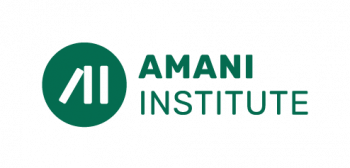In our fast-paced professional routines as managers, it’s easy to become consumed by the day-to-day grind and lose sight of overarching goals. This is where a strategic team retreat comes into play as a game changer – picture it as a deliberate pause, a chance to recalibrate and realign our focus. While the routine navigation remains essential, the organizational journey becomes clearer and more manageable when we take the time to step back and strategize.
Setting the Stage
Before we set sail on this journey, let’s first chart our course which begins with asking the right questions to all our stakeholders. Their responses will contribute to the setting of clear objectives and outcomes, ensuring that we avoid the risk of drifting away from where we intended. So, gather your team together and define your objectives (the big, specific goals, guiding what we want to achieve – they shape what we’ll do and focus on making positive changes in the team or organization) and outcomes (the actual results we hope to see after the retreat – they show us how well we’ve met our objectives, like better teamwork, clearer roles, or new ideas). By establishing these two upfront, everyone on board knows what to aim for. The POP (Purpose, Objectives, Plans) framework is a valuable tool in effectively planning and preparing for a strategic team retreat. It involves:
- Establishing the Purpose of the retreat to help ensure alignment with the team’s overall mission and goals, providing a clear focus for all activities and discussions.
- This sets the stage for defining specific Objectives, which outline the desired outcomes and milestones to be achieved during the retreat.
- These objectives serve as guiding principles for developing detailed Plans, encompassing the agenda, activities, and resources needed to accomplish the set goals. clearly defining objectives, allowing teams to establish overarching goals and intentions for the retreat, providing a sense of direction and purpose.
Winning Strategies
Planning and preparation is only half the battle; we must also ensure we stay on course throughout the actual retreat. This is where a strategic facilitator, not trainer or MC, comes into play. You might wonder what the difference is. A facilitator guides a group through a process to help them achieve a goal or make a decision, whereas a trainer involves teaching specific skills or knowledge to individuals or groups. MCs on the other hand take charge of the line-by-line agenda, maintaining continuity and flow of speakers and activities. A strategic facilitator guides us through the twists and turns of our agenda, helping us navigate tough conversations and potential obstacles. Their expertise in group dynamics and process facilitation ensures that every team member has a voice and that discussions stay focused and productive. Enlisting the help of a skilled facilitator is a great way to maintain momentum and direction. A strategic facilitator brings a toolbox of techniques and methodologies to the table. From brainstorming exercises to decision-making frameworks, they know how to structure discussions and activities to maximize productivity and creativity. A seasoned facilitator knows how to adapt their approach to suit the unique needs of the team and the objectives of the retreat.
Now, let’s look at a summary of strategies that ensure our goals are not only set beforehand but also met during the retreat:
- Engage All Stakeholders: Every stakeholder brings unique skills and perspectives to the table. Encourage active participation from everyone, ensuring that all voices are heard and valued. This not only fosters a sense of inclusivity but also leads to richer discussions and more innovative solutions.
- Set Clear Objectives and Outcomes: clearly define the objectives of your retreat. What specific outcomes do you want to achieve? Having clarity on this will keep everyone aligned and focused.
- Create an Agenda: Think of the agenda as your itinerary. Outline the topics to be discussed, activities planned, and allocate time for each. This ensures that you cover everything as planned.
- Stay Flexible: Discussions during a retreat can be unpredictable. Be prepared to adapt and adjust course as needed. Flexibility is key to navigating changing currents and seizing unexpected opportunities. Utilizing the POP framework can help you stay organized, focused, and adaptable throughout the planning process and during the retreat itself.
- Set Action Plans: It’s not enough to simply discuss ideas; we must also translate them into actionable goals. Identify concrete steps and assign responsibilities to ensure accountability and progress long after the retreat has ended.
Bonus Tip: DIY Facilitation
In case you are unable to bring in a professional facilitator, outline the various roles as per your sessions and split them clearly among the leadership team.
In Conclusion:
By following these strategies, you can navigate your strategic team retreat with confidence, knowing that you’re on course to achieve your goals.
We’d be happy to help you put together a successful strategic team retreat. Talk to us about your vision for the next retreat.





